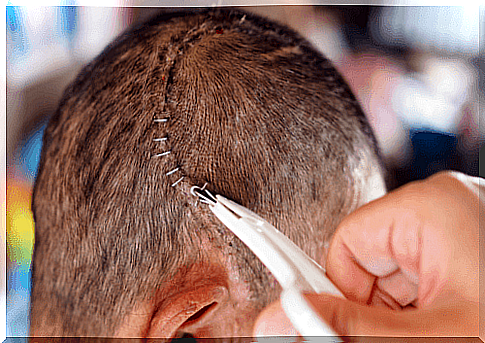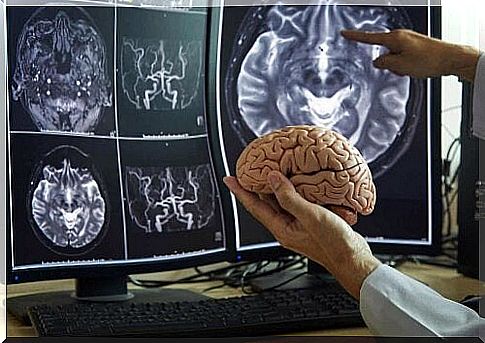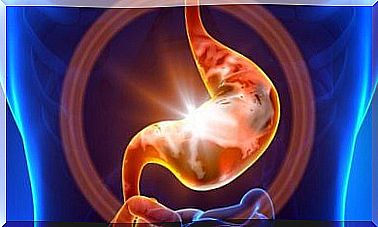What Is A Craniotomy And When Is It Necessary?

Multiple conditions can affect brain function, and performing a craniotomy is often the only possible solution. This operation is important as the brain is the control center for all the functions of the body.
A craniotomy is a surgical procedure that consists of removing a segment of the skull to expose a portion of the brain. The removal of the bone is temporary and the surgeon will put it back in place before the operation is completed.
It must, of course, be performed by a neurosurgeon, who determines the size of the incision depending on the problem. One of the main purposes of this procedure is the removal of brain tumors.
What is the purpose of a craniotomy?
This procedure is suitable for patients with structural and other types of changes that affect the proper functioning of the brain. Its main purpose is to repair any existing abnormality without affecting the cortical functions.
A craniotomy thus provides access to the brain to remove or repair something. Moreover, it is a rather complex and delicate procedure and some people dread it. Nevertheless, the success rate for it is quite high.
Craniotomy versus cranectomy
People often confuse “craniotomy” with another similar procedure called “cranectomy”. The latter, however, is a permanent removal of a segment of the skull. That is, doctors do not put the removed bone back in place after surgery.
The primary purpose of a cranectomy is to provide more space for the brain when there is a significant inflammatory process such as. intracranial hypertension. This change has several reasons, e.g. bleeding, infarction and trauma.

Conditions that require a craniotomy
One of the main reasons for performing this surgery is the presence of a brain tumor. In these cases, studies show that allowing certain parts of the brain to remain active during the procedure helps maintain all important functions. A craniotomy can also be the solution to the following conditions:
- Aneurysm or dilation of cerebral arteries.
- Subdural, epidural, and intracerebral hematomas.
- Brain abscess.
- Congenital arteriovenous abnormalities.
- Lesions in the meninges.
- Skull fracture after trauma.
Before the operation
The preparation for the procedure is quite strict as it is quite invasive. First, the doctor must order several different laboratory tests to find out if they can perform the surgery successfully.
Patients should usually wash their hair with a special antiseptic shampoo the night before the craniotomy. This is to reduce the risk of infection. In addition, they must skip all slowly digestible foods on the day of surgery. In some cases, doctors also recommend shaving your entire head or at least cutting your hair very short.
The specialists may indicate other prior measures, depending on the underlying pathology. For example , a person may need to suspend the consumption of certain drugs up to a week before the procedure. They should also avoid drinking alcohol and smoking.
When the patient and family enter the hospital, they have to sign a series of documents and a nurse explains the whole procedure. In addition, the anesthesiologist will provide information on general anesthesia and its possible side effects.
How does the procedure work?
In general, this type of surgery can last between three and five hours, although it all depends on the condition being treated.
Once the patient is in the operating room, he or she lies down on the operating table, and the healthcare professional installs an intravenous tube, a bladder catheter to empty the bladder, and general anesthesia.
Once the anesthesia begins to work, the health care professional will remove all hair from the area and clean it. The doctor then cuts up the scalp with a scalpel and drills small holes with a special drill. Finally, they cut out the desired bone segment with a craniotom tool.
The hard outer meninges called the dura will be visible and must be cut open to expose the brain after removal of the bone. The doctor will then use a series of small instruments to get around the brain. He or she will also need lenses with special magnification.
After repairing the abnormality of the brain, the specialist must carefully remove all instruments and sew the dura together. They then place the extracted bone segment back in its original position and secure it to the skull with titanium plates and screws.
The recovery process after a craniotomy
People who are operated on usually enter a recovery room, after which the medical staff transfers them to the intensive care unit when they wake up and seem stable.
Healthcare professionals need to make sure there are no additional brain conditions. All people undergoing this surgery usually have a sore throat and nausea in the first few days and it can be relieved with medication.
Several studies show that headaches are also frequent after surgery, especially in the first few days. This headache occurs on the same side as the procedure, but improves after a few weeks. Opioids, anti-inflammatory drugs and painkillers can reduce the discomfort.
The hospital stay varies from two days to two weeks. In addition , patients must attend a follow-up medical consultation two weeks after surgery. The total recovery time varies between one and four weeks.
Possible risks and complications
A craniotomy is a rather delicate operation, and complications can therefore occur. First of all, there are those that are associated with all types of surgeries, e.g. reactions to medication, difficulty breathing and bleeding.
In addition, this operation has special risks and complications, the most common of which are changes in brain function. In this connection, there may be changes in speech, memory and coordination.
All this is due to possible brain and nerve damage that usually occurs in connection with the removal of a tumor. Other common complications are :
- Muscle weakness.
- Cramps.
- Cerebrovascular disease (CVD).
- Come on.
- Bleeding, infection or cerebral edema.

Lifestyle and recommendations
Results and prognosis after a craniotomy vary. However, they are beneficial in most cases. Surgery can affect a person’s lifestyle, especially in the first few weeks after surgery.
In this regard, it is important to get adequate rest, limit effort and undergo appropriate physiotherapy sessions until one is fully recovered. However, all patients should improve their lifestyle and adopt healthier habits.
A procedure with a high success rate
A craniotomy provides access to the brain mass, making it possible to resolve multiple brain conditions. It is the best solution for aneurysms and multiple tumors as it allows the repair to be repaired while minimizing damage.
This procedure has a large number of possible complications, but the benefits outweigh the risks. As always, it is important to inform your doctor about any questions or concerns.









